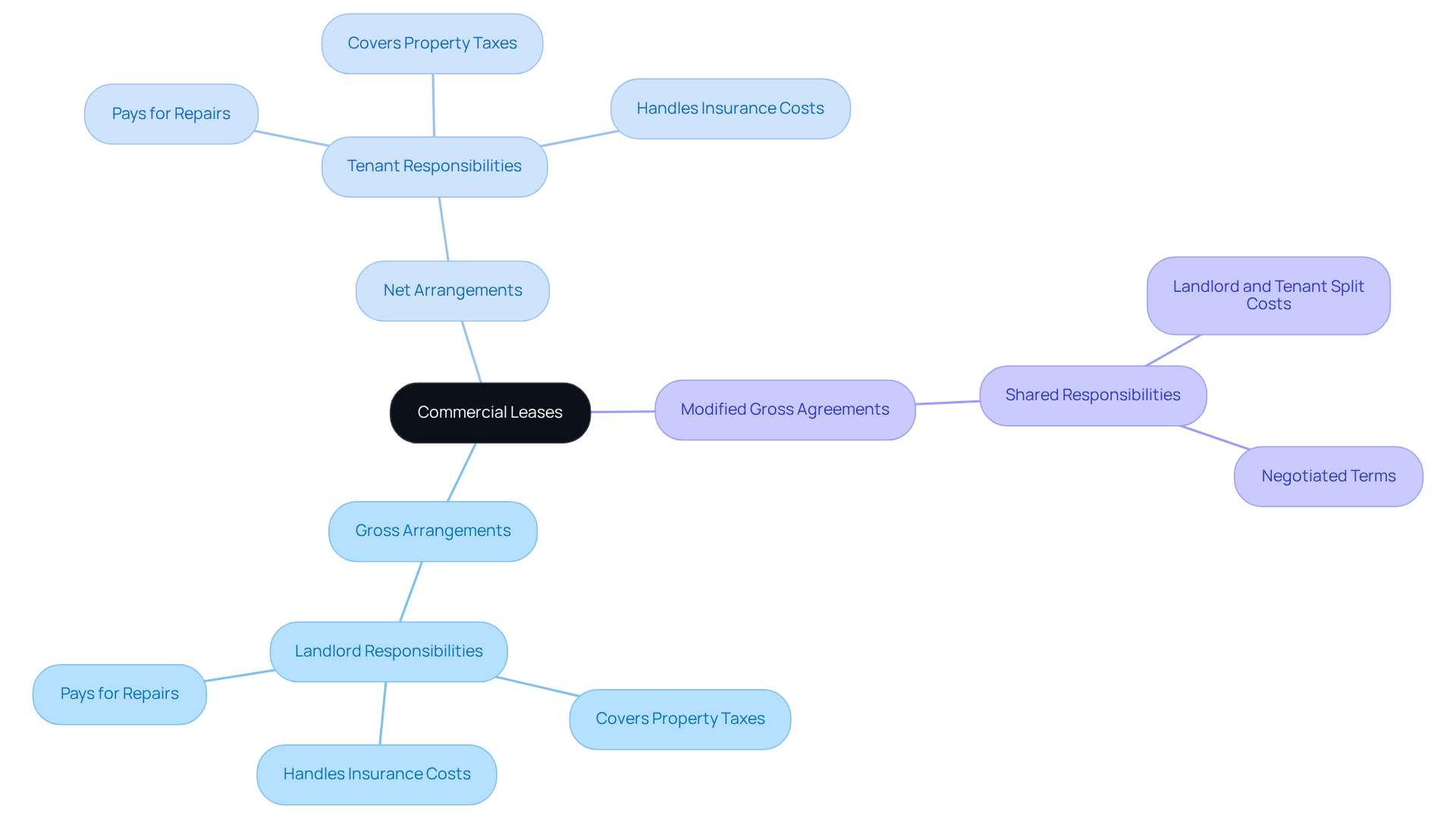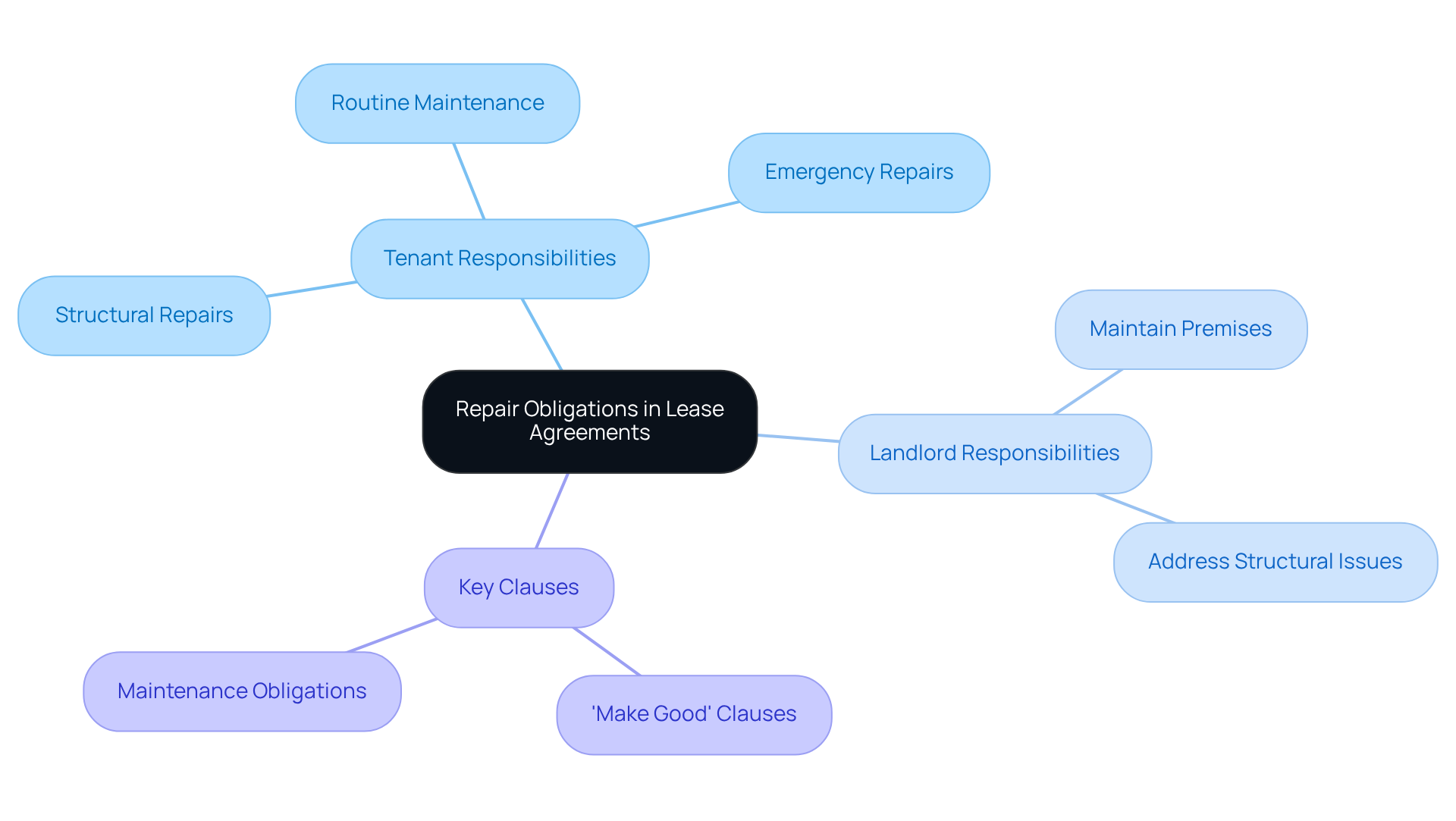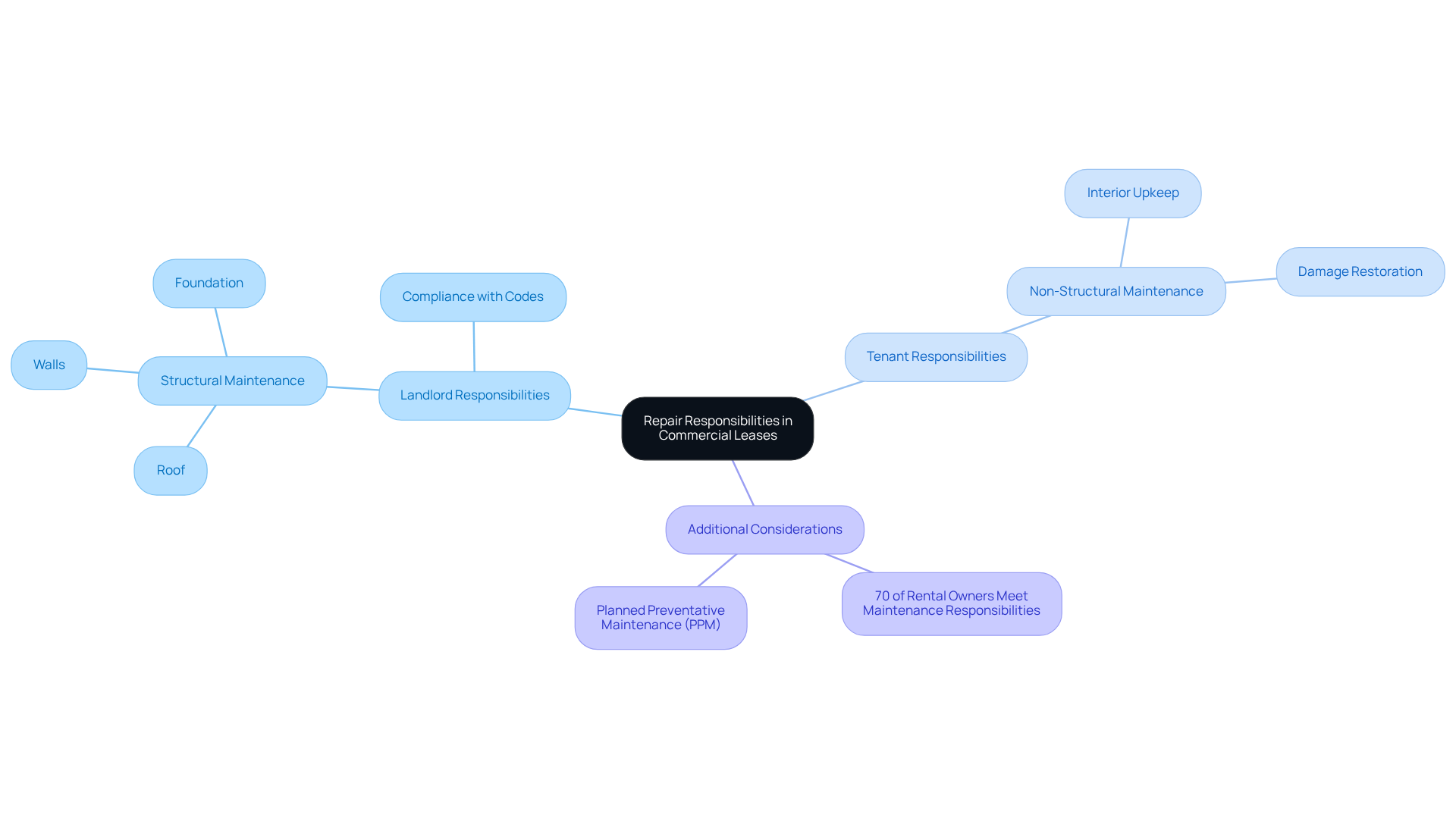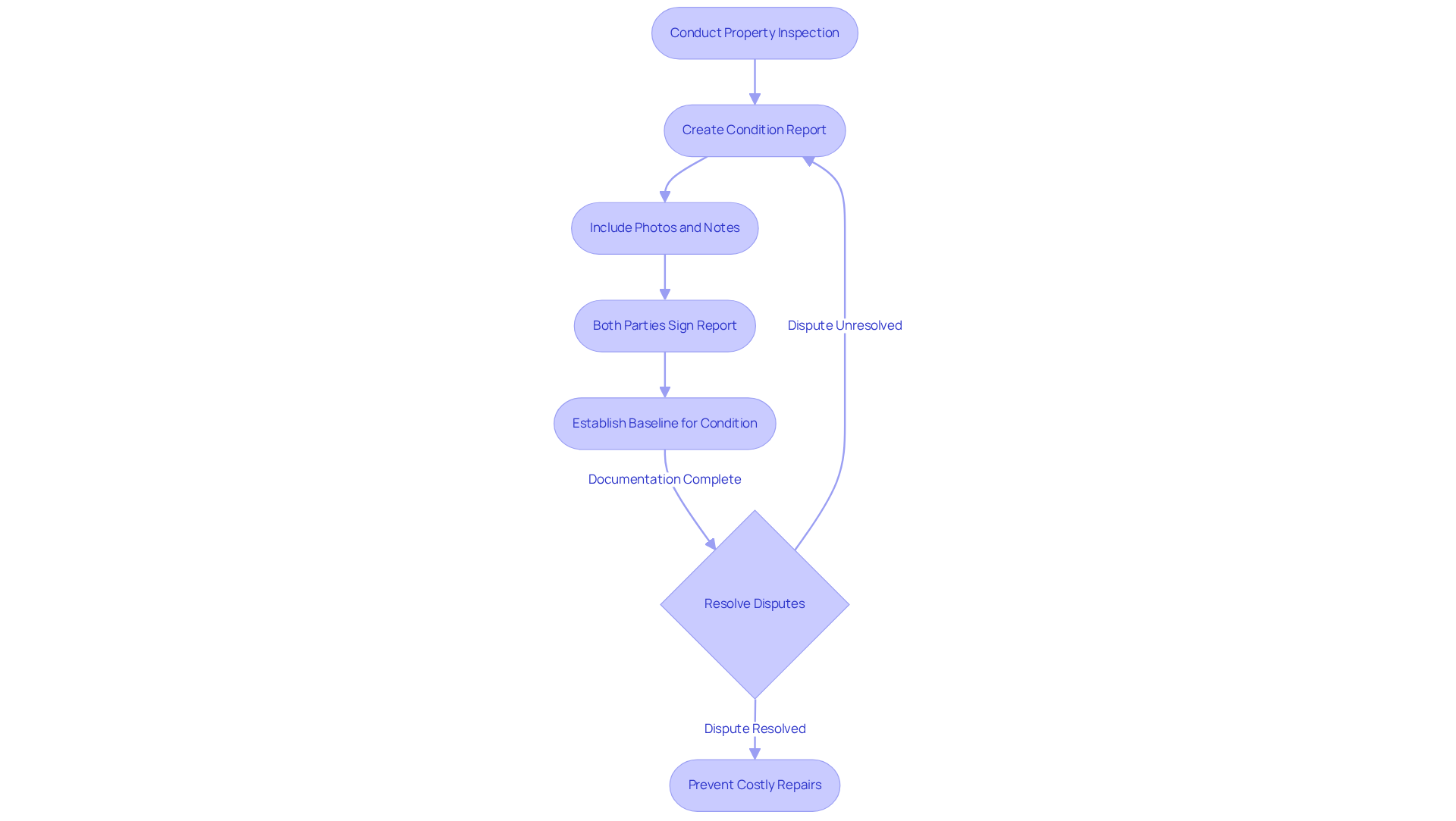Overview
This article examines the responsibilities associated with repairs in commercial properties, emphasizing that these obligations depend on the type of lease agreement in place. Typically, landlords are tasked with structural repairs, whereas tenants are responsible for non-structural maintenance.
It is crucial to have clearly defined lease terms to prevent disputes and ensure both parties understand their responsibilities. By establishing these parameters, both landlords and tenants can avoid misunderstandings and foster a more harmonious relationship.
Introduction
Navigating the complexities of commercial leases can be daunting, particularly when it comes to understanding repair responsibilities. These agreements not only dictate the terms of occupancy but also outline who is accountable for various maintenance tasks, significantly impacting both landlords and tenants. As the stakes rise in the commercial real estate market, the question remains: how can parties ensure clarity and avoid disputes over repair obligations? This article delves into the intricacies of commercial property repair responsibilities, providing insights that empower stakeholders to navigate their agreements with confidence.
Understand the Basics of Commercial Leases
Commercial contracts represent pivotal legal agreements between landlords and tenants, delineating the terms for renting a commercial property. Key elements include the duration of the agreement, rental payments, and the specific obligations of both parties. Understanding these fundamentals is crucial as it clarifies the responsibilities regarding commercial property who pays for repairs.
Are you familiar with the typical rental agreements, such as:
- Gross arrangements
- Net arrangements
- Modified gross agreements?
These agreements distinctly outline the maintenance responsibilities of the commercial property who pays for repairs. For instance, in a net agreement, tenants may bear the costs of property taxes, insurance, and maintenance, whereas in a gross arrangement, the landlord typically assumes these expenses, making it clear who pays for repairs in the commercial property. Recognizing these differences is essential for grasping future maintenance responsibilities.

Identify Repair Obligations in the Lease Agreement
To determine the commercial property who pays for repairs, performing a comprehensive examination of the rental contract is crucial. Look for clauses that clarify the commercial property who pays for repairs, including those for structural, routine maintenance, and emergency repairs. Are there phrases such as 'make good' clauses? These may require tenants to return the premises to its original condition at the end of the agreement. Furthermore, verify any stipulations concerning the landlord's responsibilities to maintain the premises.
Considering the intricacy of establishing accountability for maintenance costs in commercial agreements, obtaining legal counsel can be essential for those uncertain about commercial property who pays for repairs. As Laura Worrad, an Employment & HR Lawyer, observes, "As with any asset, the necessity for upkeep and maintenance is often unavoidable." Documenting these obligations can prevent misunderstandings and disputes later on.

Differentiate Between Tenant and Landlord Repair Responsibilities
In commercial leases, determining who pays for repairs is crucial for preserving asset integrity and preventing conflicts.
In commercial property, landlords typically bear the responsibility for structural maintenance, which encompasses essential elements such as the roof, walls, and foundational issues. Their obligation is to ensure that the property remains safe and compliant with building codes.
Conversely, tenants are generally responsible for non-structural maintenance, which includes upkeeping the interior of the premises, including fixtures and fittings, as well as addressing any damage resulting from their activities. For instance, if a tenant inadvertently damages a wall, they are typically accountable for its restoration.
This clear delineation of responsibilities is vital for both parties, as it helps them fulfill their obligations effectively and minimizes the potential for conflicts.
Furthermore, recent studies indicate that approximately 70% of rental owners meet their maintenance responsibilities in commercial spaces, underscoring the importance of effective communication and adherence to lease agreements.
In addition, real estate law specialists emphasize that structural repairs are essential for the safety and functionality of the premises, highlighting the necessity for owners to prioritize these responsibilities.
Moreover, implementing Planned Preventative Maintenance (PPM) is essential for preserving building integrity and managing long-term costs, ensuring that both landlords and tenants can uphold their responsibilities effectively.

Document the Property's Condition Before Leasing
Before signing a lease, conducting a comprehensive inspection of the premises is essential. This meticulous process involves creating a detailed condition report that includes photographs and notes on any existing damage or wear. The report should cover all aspects of the premises, such as:
- Walls
- Floors
- Fixtures
- Appliances
Both parties should sign the report to confirm its accuracy, serving as a crucial reference point. This documentation not only aids in resolving disputes regarding who pays for repairs in commercial property but also ensures that tenants are not held liable for pre-existing issues. Establishing a clear baseline for the condition of the premises at the lease's commencement is vital. Studies indicate that over 60% of tenants conduct inspections before finalizing lease agreements. Furthermore, owners can save thousands of dollars over time by performing regular inspections, which assist in detecting minor issues early, guaranteeing a safe and comfortable living environment for renters. Utilizing Schedules of Condition can further protect both landlords and tenants from disputes regarding commercial property who pays for repairs and property condition. Such diligence can prevent costly surprises and foster a smoother landlord-tenant relationship.

Conclusion
Understanding the intricacies of who pays for repairs in commercial leases is essential for both landlords and tenants. This knowledge not only clarifies responsibilities but also plays a pivotal role in maintaining a harmonious landlord-tenant relationship. By recognizing the various types of commercial lease agreements and their implications on repair obligations, parties can navigate their agreements with greater confidence and clarity.
The importance of thoroughly reviewing lease agreements to ascertain repair responsibilities cannot be overstated. Differentiating between landlord and tenant obligations, as well as documenting the property’s condition before leasing, are crucial steps. Key insights, such as the necessity for legal counsel and the implementation of Planned Preventative Maintenance (PPM), underscore proactive measures that can be taken to avoid disputes and ensure compliance with maintenance duties.
Ultimately, a comprehensive understanding of commercial property repair responsibilities fosters better communication and minimizes conflicts. By taking the time to clarify these obligations and document property conditions, both landlords and tenants can protect their interests and ensure a successful leasing experience. Engaging in these practices not only enhances the integrity of the property but also contributes to a smoother, more productive relationship moving forward.




